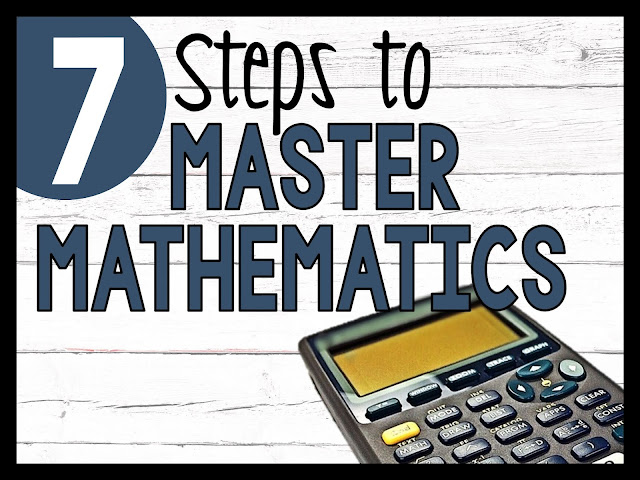Helping Your Students Master Mathematics
As a math teacher, I can't even tell you how many times a student would excuse their poor math work with the comment, "Well, I'm just not a math person." What was even more horrifying, is when a PARENT would excuse the poor math work of the student with the comment, "Well, I'm not a math person, so he/she is not a math person." There does not exist two categories of math people or not math people. However, I do believe that there exists two categories of people who know how to learn math and people who do not know how to learn math. The great thing is that these categories are flexible and you can easily teach your students to belong to the "I know how to learn math" category. Here are 7 steps to help your students be successful in the math classroom.
1) Daily Engagement
Stress the difference between engagement and participation. Participating students may simply be copying notes. Engaging students may be copying notes and trying to internalize the notes by making connections. Engagement encourages the use of higher-order thinking skills. In order for students to engage daily, your classroom instruction needs to promote critical thinking skills.
2) Learn from Mistakes
Encourage students to never erase mistakes. Instead have them leave their mistakes, and with a different color they can mark and explain their mistakes. Continually model this to students by marking your mistakes on the board. A safe environment is required for students to feel safe to do this step. Celebrate mistakes as a step in learning.
3) Ask Critical Questions
An example of a non-critical question is, "What's the next step?" An example of a critical question is, "How do ratios connect with the circumference of a circle?" Make a poster of words that help create critical questions. You could teach them Bloom's taxonomy, and classify different questions for each level. Consistently point out and praise critical questions in the classroom.
4) Show All Your Thinking
Teach students different way to show their thinking. This can include in writing, with models, diagrams, equations, expressions, etc... Showing calculations depends on the level of the student. Teach students to write in complete sentences. Students should label their models and diagrams. do not accept low quality with this step. Consistently push the students to do more and more. Have them redo the assignment over and over until they are showing quality work.
5) Don't Cut Corners
Students often just want to "be done" with the problem. To help students to not cut corners, assign fewer problems, but require quality. Cutting corners causes students to make mistakes and not critically think through the problem.
6) Make Connections
When students make connections they will retain the information more easily. Many times connections are not obvious and you will need to guide them to discover different connections. Connections between algebra and geometry are critical to understanding higher-level mathematics. Consistently push them to find connections.
7) Be Humble
Humility is essential for students to learn mathematics. The students that think they are "bright" are often those students who learn very quickly, mostly because they can memorize. These students often think that they don't need to explain their thinking, because they already have the correct answer. Don't let students cut corners. Push these students to ask higher-order thinking skills. The students who struggle often don't want you to know that they struggle, so they will erase mistakes and try to cover up their weaknesses. Having a positive environment that values mistakes will help these students. Students who struggle may not want you to know that they struggle, so they will
erase mistakes and try to cover up their weaknesses. Having a positive environment that values
mistakes will help these students.
Save This Article
Save these tips and ideas to your favorite classroom Pinterest board. Come back and reference them for ideas on helping your students master mathematics.










